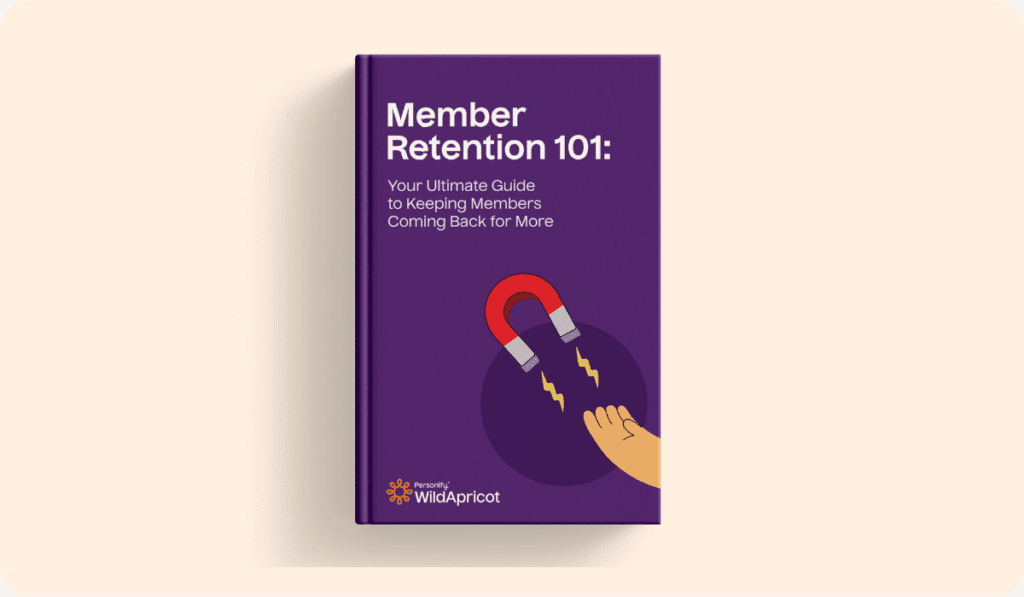Associations have the power to bring people together and make lasting social change—that’s a huge motivator for joining one! Ready to level up your role in those efforts? Well, if you’re already employed at an association with a few years’ experience behind you, it might be time to think about getting your CAE certification!
As part of the path to certification, you’ll go through a ton of professional development. It’s a great way to get recognized for your leadership in the associations and nonprofits industries—and make a bigger impact!
We’ll walk you through what you need to know about CAE certification. Let’s get started!
What is CAE Certification?
If CAE is a new term for you, don’t worry! CAE stands for Certified Association Executive. To get certified, you’ll need to pass an exam and commit to continuing education. Getting certified can be a great boost to your career because it’s known as one of the highest professional credentials in the association industry.
The CAE was made back in 1960 by the American Society of Association Executives (ASAE). The ASAE’s goal was to set a benchmark for the skills needed to best manage associations. Being certified means that you have the experience to manage associations, tackle challenges and holistically grow in an evolving landscape.
Applying for the certification is simple, just fill in your education experience, professional background, professional development activities and payment details.
The Benefits of Certification
There are plenty of benefits to becoming CAE certified:
- Make your resume sparkle: Show your professional prowess with a certification widely recognized by association executives, recruiters and HR directors.
- Level up with professional development: CAE test-takers say that taking the certification boosts their knowledge, brings them more professional opportunities and raises their status in their current role.
- Make new connections: Grow your network by taking part in CAE-only events, volunteer leadership opportunities and regional association professional societies that’ll have you connecting with like minded professionals.
- Strengthen your organization: By honing your association skills to pass the CAE exam, you can give back to your organization by increasing productivity, reducing training time and offering a competitive advantage.
How much does CAE certification cost?
The exam costs $500 for ASAE members and $750 for non-members.
Does CAE Expire?
Yes, your CAE certification does expire and needs to be renewed every three years. This is where your commitment to continuous learning comes in.
To renew your certification you’ll need to earn 40 credits by taking professional development activities like the CAE credited lectures and classes we covered above. Keep in mind that as of 2020, one CAE credit needs to be ethics-focused.
Who’s Eligible for CAE Certification?
To become a CAE certification candidate you need to:
- Have the right work experience. That’s 3 years as a CEO or 5 years as a staff member at a qualifying association. You’ll need to either be currently employed, or employed by one in the past 5 years.
- Have a bachelor’s degree or similar professional experience. A bachelor’s degree or higher is a great asset. But if you don’t have a degree, don’t worry! Eight years of professional work experience counts, too!
- Uphold the ASAE Standards of Conduct and have no felony convictions related to association management.
- Complete 100 hours of professional development within 5 years time.
Checking all the Professional Development Boxes
So you’ve got the right work experience for CAE eligibility. Great! Now, how do you reach those 100 hours of professional development?
Fortunately, there are many pathways to completing the requirements. Here are a few of them:
1. Self-paced study
Prefer to study at your own pace? Great news—as long as the self-study program is recent and has clear learning objectives tied to the CAE exam content outline, you can count it towards your progress!
Once you’ve finished the program, send a certificate of completion with your exam application. Keep in mind that self-studying can only count for one-half of your education hours.
2. College or university classes
Any college or university course you take related to association or nonprofit management will earn you CAE credits. You’ll just need to check that it’s an accredited academic institute, and that it’s recognized in the CAE exam content outline.
How many credits will you earn per college semester?
- 15 CAE credits per college semester credit
- 14 CAE credits per college trimester credit
- 10 CAE credits per college quarter credit
After taking the class, hang onto your transcript! You’ll need to attach a copy (plus the course description) with your exam application.
3. Live conferences, workshops, seminars or classes
There are so many types of learning opportunities you can take part in on your path to taking the CAE exam!
Several different organizations offer in-person and online courses that count for CAE credits. For each activity, you’ll earn one CAE credit per hour, including partial credits, for up to 8 CAE credits a day.
Here’s a few to check out:
- ASAE
- CAE approved providers
- Societies of association executives
- The U.S Chamber of Commerce Institute for Organization Management
- Personify
That’s right! We’re one of them! WildApricot’s parent company, Personify, offers webinars and events throughout the year where association and nonprofit professionals can gain CAE credits. Check out our library of webinar content here that will count towards your learning!
Gain a CAE credit at our upcoming webinar: The New Member Journey: Emerging Member Personas for Associations
4. Mentoring and coaching
If one-on-one learning is just what you’re looking for, then you can also be mentored or coached by a CAE certified professional.
This development opportunity helps you learn the ins-and-outs of association management from a pro while fine-tuning your skills. Just make sure that your mentor or coach is employed at a different organization than you.
You can earn up to a maximum of 10 CAE credits this way. CAE credits are earned on an hourly basis starting at 10 hours:
- 10 hours: 5 CAE credits
- 12 hours: 6 CAE credits
- 14 hours: 7 CAE credits
- 16 hours: 8 CAE credits
- 18 hours: 9 CAE credits
- 20 hours: 10 CAE credits
When submitting your exam application, you’ll need to include the CAE mentoring form.
5. Preplanned group study
Buddy up with at least three other test-takers from different organizations and create a study group on association management topics. With study groups, you can earn a CAE credit per hour for a maximum of 20 credits.
What are CAE Certification Providers?
Simply put, a CAE provider is an organization that has registered with the CAE program and meets the CAE Commission’s standards to help professionals earn or keep their CAE certificate.
CAE certification providers will help you on your journey to get certified with helpful resources and learning activities for prepping for the exam and getting learning credits.
All approved providers get guidance on what counts for CAE credits, so learning with them will count towards getting your certification. Also, providers get the CAE exam content outline and list of CAE core resources so they can best prep students for the exam.
There are tons of official CAE certification providers to select from. You can check out this list of approved providers with links to get more information about their courses.
5 Steps to Getting your CAE Certificate
Getting your CAE certificate is a journey. But to guide your way, you can refer to these 5 steps!
Step 1: Find out if you’re eligible
Keep that list above handy. You can apply for the CAE certification after reaching all of the eligibility requirements, including professional development and work experience.
Step 2: Apply for the exam
The CAE exam is held twice a year, in May and December. Give yourself at least three months to prepare for the exam and be sure to apply accordingly. The application deadlines are typically in February and September.
Step 3: Study, study, study!
From books to course work and practice tests, there is plenty to review for the exam. The ASAE offers a list of resources to help you ace the test.
Step 4: Take the exam
You’ve prepared for this, now buckle up! The four-hour exam includes 200 multiple-choice questions.
Step 5: Get recognized!
After earning your CAE certificate you’ll be celebrated at the next ASAE Annual Meeting & Exposition.
So, Is Getting CAE Certified Worth It?
Becoming CAE certified is a great fit for you if you want to highlight your in-depth knowledge of association management. If you’re someone who wants to invest in their own professional development by learning everything you need to ace the CAE exam while adding value to your association, becoming CAE certified is the way to go.










